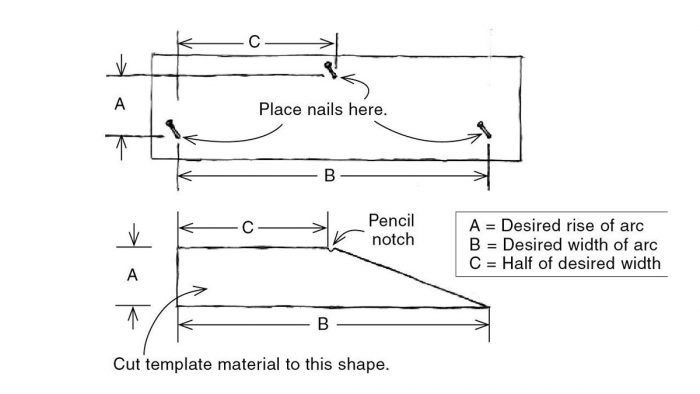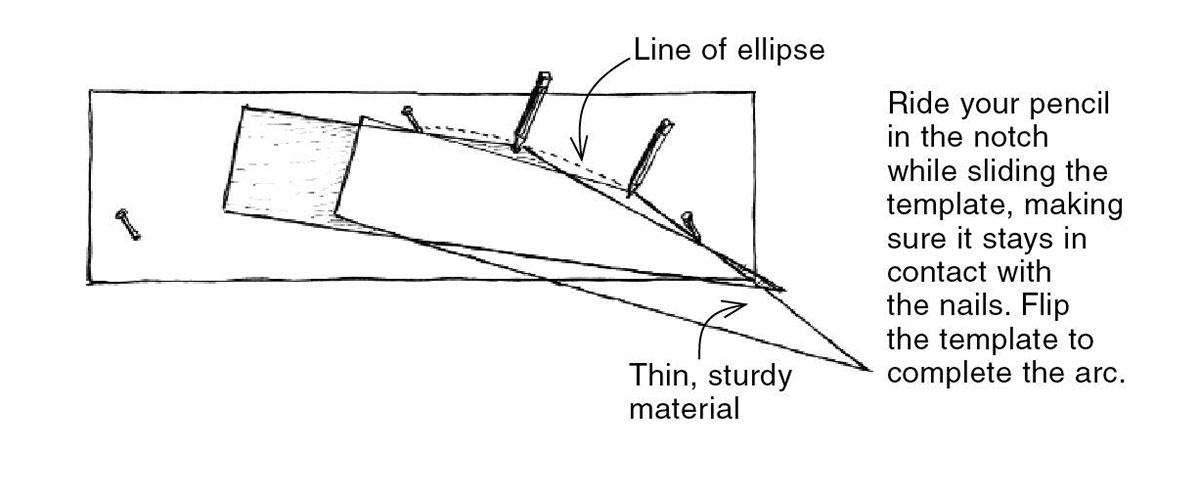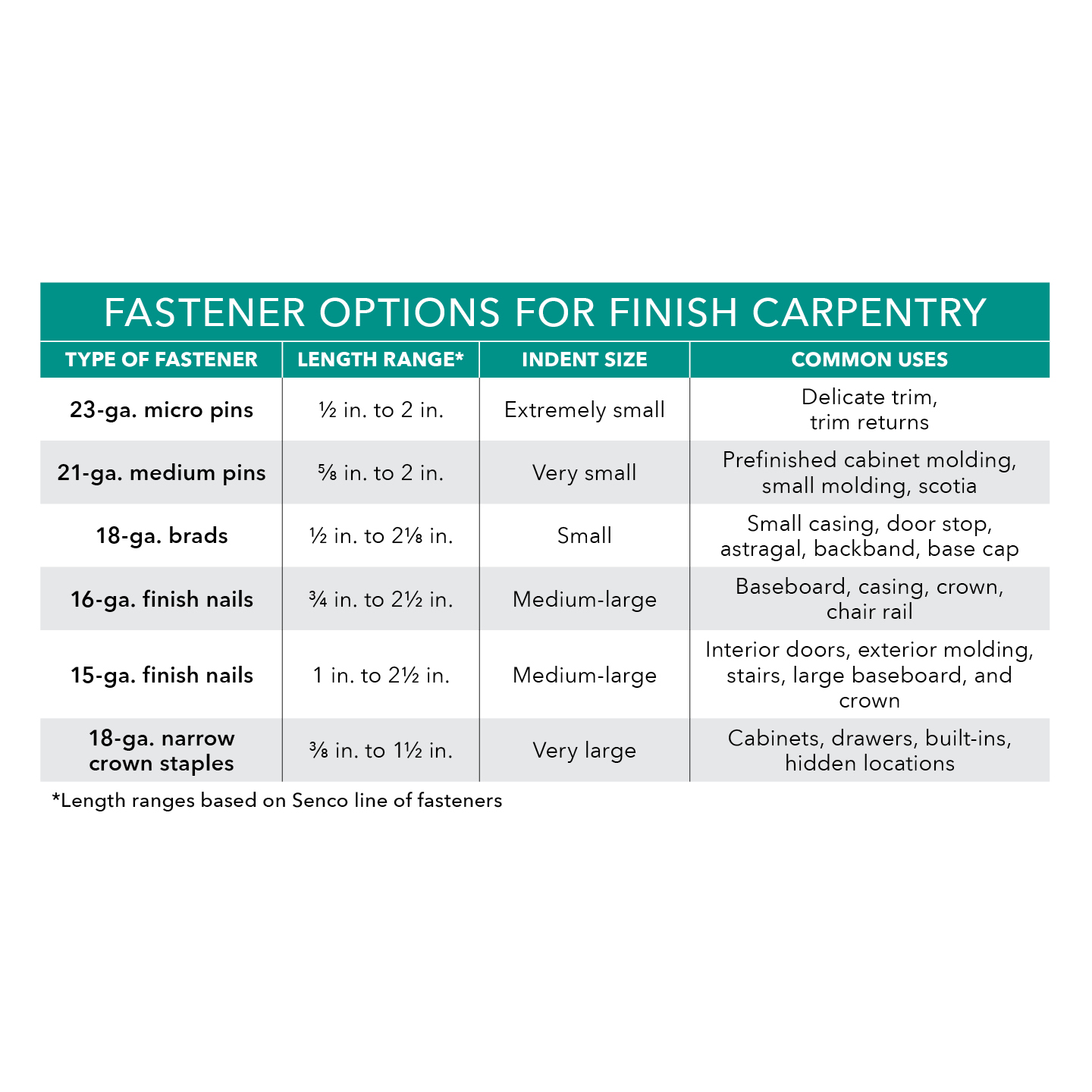Easy Ellipses … Mostly
A simple way to make ovals for doors, doorways, furniture, entrance porticos, ceilings, and more.

Here is a method for creating a simple ellipse that I learned many years ago from an old-codger furniture maker. I’m told it does not create a true ellipse, but I’m okay with that. I have used it for everything from doors and doorways to furniture, entrance porticos, and ceilings. I like it because it’s readily adjustable to whatever conditions and circumstances I find myself in.

First, I place nails into the stock to be cut at the desired rise and width of the arc. Then I cut a template from any thin, sturdy material. At the upper midpoint of the template, I make a small pencil notch and draw a line to one of the lower corners. After cutting the corner off of the template, I ride it along the two nails with a pencil in the notch. This makes one side of the ellipse. I just flip the template to do the other side.
— David Kingsley, Newtown, Conn.
Edited and illustrated by Charles Miller
From Fine Homebuilding #276






























View Comments
Just a variation on this simpler technique using two wooden battens.
IIRC, another variation is to use a string around the pins/nails. Memory (weak) says to size the string around the 3 pins, then slip it off the minor axis pin, and make the ellipse trace with the pencil inside the now floppy string that’s still anchored by the 2 major axis pins.
The nice thing about this variation is that one can keep on going around the end to describe the other half of the ellipse, or to describe only both sides of the minor axis (skinny ellipse).
S_curvy,
Just to add, the method you described produces a perfect ellipse, unlike the other two.
I believe the first 2 methods produce a circular arc, a curve of constant radius. It will only be tangent at the sides of (the doorway) if the battens are at 90 degrees, like a framing square. (Try it with a framing square and a rectangle on sheet of plywood- snap 2 lines, parallel to the edges, about 24" apart, a line across them parallel to the end, nails where the lines cross, move the framing square around the nails with the pencil at the heel.)
An ellipse has constantly changing radius and the only simple way to draw one is the string method described by S _curvy.